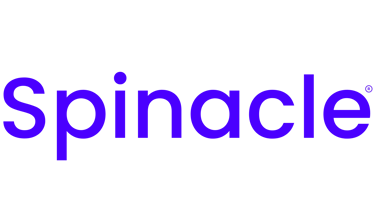Chapter 4: How We Ended Up in Insurance
By December 2024, we were knee-deep in HIMS and insurance, trying to figure out our exact role in this massive, complex industry.
HEALTHCAREAIINSURTECH
Santhosh Kumar E
2/5/20254 min read
(Or, The Time We Realized That Insurance Isn’t Just About Paperwork and Payouts)
By December 2024, we were still figuring things out.
We had spent months refining our HIMS and Insurtech model, but we still had one big question:
👉 What exactly are we building, and how do we make it work?
We knew that hospitals struggled with managing patient data and that insurance suffered from slow claim processing, but we hadn’t yet found the perfect intersection between the two.
Then came Cohort 6 of 18Startup, and everything changed.
The Credibility Struggle – The Reality of Being Young Founders
Before we get into how we landed in insurance, let’s talk about something that every young founder faces:
🚧 Credibility.
🚀 Unlike many startup founders who work for 5–10 years in a corporate job before launching their venture, we jumped straight into entrepreneurship while still in college.
💡 We didn’t have an MBA.
💡 We didn’t have 10 years of experience at a big company.
💡 We didn’t even have our degrees yet!
So when we approached investors, mentors, or industry experts, we always faced the same question:
❓ “You’re young. What experience do you have? Why should we trust you to run a startup?”
This was one of the biggest challenges we faced early on.
📌 We couldn’t manufacture experience overnight, but we could build credibility.
And the best way to do that?
Startup incubators and accelerator programs.
Building Credibility Through Incubators
We knew that if we couldn’t show industry experience, we needed something else:
✔ Proof that we had been tested, challenged, and refined by the best startup programs in the country.
So we started applying to every major incubator and cohort we could find.
Did we get accepted immediately? Of course not.
🚫 We applied, got rejected, improved, and applied again.
🚫 We pitched, got tough feedback, refined our model, and tried again.
🚫 We kept iterating until we started getting into top-tier incubators.
By 2024, we had been part of 7 to 8 incubators across India, including:
✅ NSRCEL – IIM Bangalore's startup incubator
✅ T-Hub Rubrics Program
✅ Multiple startup accelerator cohorts across India
Each program wasn’t just about learning business models—it was about proving that we had what it takes.
And today?
We are alumni of these programs, meaning we can approach them anytime for support, connections, and guidance.
But there was one program that stood out—Cohort 6 of 18Startup.
Cohort 6 of 18Startup – The Turning Point
By December 2024, I (Santhosh Kumar) was still stuck between HIMS and insurance, trying to find clarity.
That’s when I applied for Cohort 6 of 18Startup—an exclusive startup learning platform that helps founders refine their business models and leadership skills.
Unlike other programs, this wasn’t just about startups—it was about founders.
For four days, I attended an offline bootcamp in Ooty in January, where I:
🔥 Got exposed to new perspectives on startups and leadership.
🔥 Learned productivity and communication techniques that transformed how I worked.
🔥 Understood the importance of refining our niche and focusing on a clear, scalable business model.
This was different from other startup programs.
Most incubators focus on:
📌 Your startup idea.
📌 Your product.
📌 Your market fit.
18Startup focused on:
🎯 You as a founder.
🎯 Your leadership style.
🎯 Your ability to build a long-term company.
That’s when everything clicked.
During the bootcamp, I called Nishaalu and told him:
📞 “We need to refine everything. We need to be laser-focused on what we’re doing. No more distractions.”
And at the same time, Nishaalu was working through a major realization himself—something that would completely reshape our direction.
The Insurance Roadblock – The Harsh Reality of TPA Regulations
While I was in the cohort, Nishaalu was analyzing the regulatory requirements for processing insurance claims.
And what we found was a major roadblock:
🚧 To process insurance claims, we needed to act as a TPA (Third-Party Administrator).
🚧 TPAs are the middlemen between hospitals and insurance companies.
🚧 TPAs verify claims, approve payouts, and ensure smooth processing.
At first, we thought:
✅ “Great! If we integrate HIMS with insurance, we can automate claims processing.”
But then we hit reality:
🚨 Becoming a TPA required huge amounts of capital and regulatory approvals.
🚨 Without TPA certification, we couldn’t legally process insurance claims ourselves.
🚨 The approval process was long, expensive, and out of reach for an early-stage startup.
At this point, we had two choices:
1️⃣ Raise millions of dollars and spend years getting regulatory approval to become a TPA.
2️⃣ Find another way to disrupt insurance without needing TPA approval.
We chose the second option.
🚀 Instead of handling claims ourselves, we would focus on making health insurance smarter and more accessible.
This was the moment when we realized:
💡 Our future was not in just HIMS. It was in Insurtech.
The Next Big Step – Setting Up Our Office
By this time, we were working remotely, but we knew something was missing—a real workspace where we could collaborate and execute faster.
So, we set up our official office at VelTech TBI (Technology Business Incubator).
This helped us:
🏢 Create a proper workspace for discussions and development.
👥 Improve team communication (remote work had too many gaps).
🚀 Work with other startups and learn from the ecosystem.
But we didn’t stop there.
We were also working on client projects and collaborating with peer startups—so we expanded further.
We opened a Small office in Mogappair, where we started handling:
📌 Working on Xecure
📌 AI and tech projects for other companies
This wasn’t just about one startup anymore—we were building an ecosystem.
The Final Pivot – Moving to B2C Insurance
With everything we had learned from:
📌 HIMS
📌 AI in healthcare
📌 Regulatory roadblocks in insurance
It became clear—we needed to shift from B2B to B2C.
Instead of focusing on hospital data management, we would:
✔ Build a direct-to-consumer health insurance platform.
✔ Make insurance smarter, more affordable, and data-driven.
✔ Offer personalized health plans using AI-driven risk assessments.
💡 This was the moment we found our true path.
Everything we had done—from AI diagnostics to HIMS to insurance—led us here.
🚀 We were finally building something that could change the industry.
What’s Next: Chapter 5 – Entering B2C Insurtech
(Where we finally focus on making health insurance smarter, data-driven, and accessible to everyone.)



